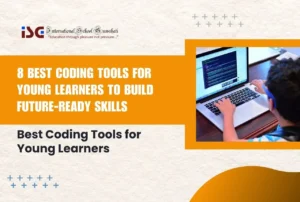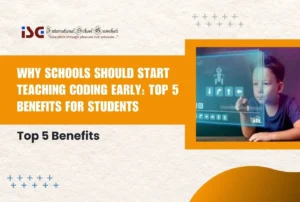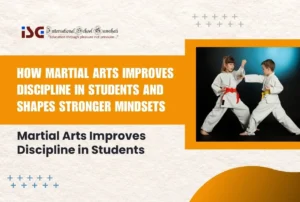![]()
Moving away from conventional teaching methods and embracing dynamic, immersive approaches, project-based learning (PBL) has proven to be one of the best approaches to learning.
By engaging students in hands-on, collaborative projects, PBL not only deepens their understanding of concepts but also sharpens their problem-solving skills and ignites their creativity. So, get ready to embark on a journey where we discover the extraordinary benefits of project-based learning in the classroom through this blog.
What is Project based learning?

Imagine a classroom where learning is like an exciting adventure! In project-based learning, students don’t just sit and listen to lectures all day. Instead, they become explorers and creators. They work together on project learning that ignite their minds with curiosity and excitement. Instead of just memorizing facts, they dive deep into real-life problems and challenges. We use our imagination, critical thinking, and problem-solving skills to find solutions. Whether they’re building a model, conducting experiments, or creating a presentation, these project based learning activities unleash creativity and enhance team building.
Benefits of Project based learning (PBL)
Enhanced Student Engagement

Project learning revolutionizes the learning experience and learning opportunities by captivating students’ attention and driving active participation. Unlike conventional classroom experiences or lectures, PBL requires students to take ownership of their education. By learning from projects that align with their interests, they become invested in the learning process. Engaging in real-world, relevant activities keeps students motivated, as they understand the practical application of the knowledge they acquire.
Expanding Learning Opportunities
A project about education aims to improve and innovate the learning experience. Students are exposed to a wide range of subjects and skills while working on projects, promoting interdisciplinary learning. For instance, a project on environmental sustainability could incorporate elements of science, mathematics, and social studies. This classroom project based learning idea not only strengthens their understanding of the subject matter but also encourages critical thinking as they connect the dots across various disciplines.
Collaboration and Communication

Project learning creates an environment that nurtures collaboration and effective communication skills. Students work in teams, learning to communicate their ideas, listen actively, and share differing viewpoints. Collaborative project based discussions foster a sense of shared communication and encourage students to value teamwork. These experiences equip them with essential interpersonal skills that are crucial in the professional world, where collaboration and effective communication are highly sought-after qualities.
Integrating Learning Ideas
Problem based learning and Project based learning(PBL), what is the difference? Although they have some things in common, they have different focuses. In project-based learning, we create something innovative as our end result, like an interesting project or presentation. Project based learning ideas On the other hand, problem-based learning is all about tackling challenging problems and finding clever solutions.
Combining the two creates a comprehensive learning experience, where students not only work on projects but also actively engage in problem-solving processes, developing a holistic skill.
Examples of PBL
- Community Service: Students identify a community issue, such as flooding or environmental pollution, and design a service project to address it. They plan and execute activities like organizing a food drive, cleaning up a local park, or creating awareness campaigns. This project fosters empathy, civic responsibility, and problem-solving abilities.
- Literary Adaptation: Students choose their favorite book or play and create an adaptation, such as a short film, a graphic novel. They analyze the themes, develop characters, and bring the story to life. This project enhances storytelling abilities, artistic expression, and literary analysis skills.
- Scientific Investigation: Students conduct experiments to collect information and study the results. Then they carefully analyze the data they gathered. Finally, they draw conclusions and share their findings in a report or presentation.
- Cultural Exchange Project: Students explore different cultures and create a project that promotes understanding and appreciation. They may create multimedia presentations, organize cultural festivals, or engage in virtual exchanges with students from other countries. This project encourages global awareness, collaboration, and intercultural communication.
Bottom Line
Project-based learning turns students into engaged learners, sharp thinkers, and innovative problem solvers. By learning from the projects in the classroom, students dive into a dynamic educational experience that goes beyond textbooks and exams. Through hands-on projects, students gain practical skills, dig deeper into subjects, and become lifelong learners. In these vibrant classrooms, knowledge thrives, teamwork flourishes, and growth is unstoppable. Get ready for an incredible journey that prepares students to seize limitless opportunities in the real world.
Also Read: 10 Easy Study Techniques for Your Math Exam








